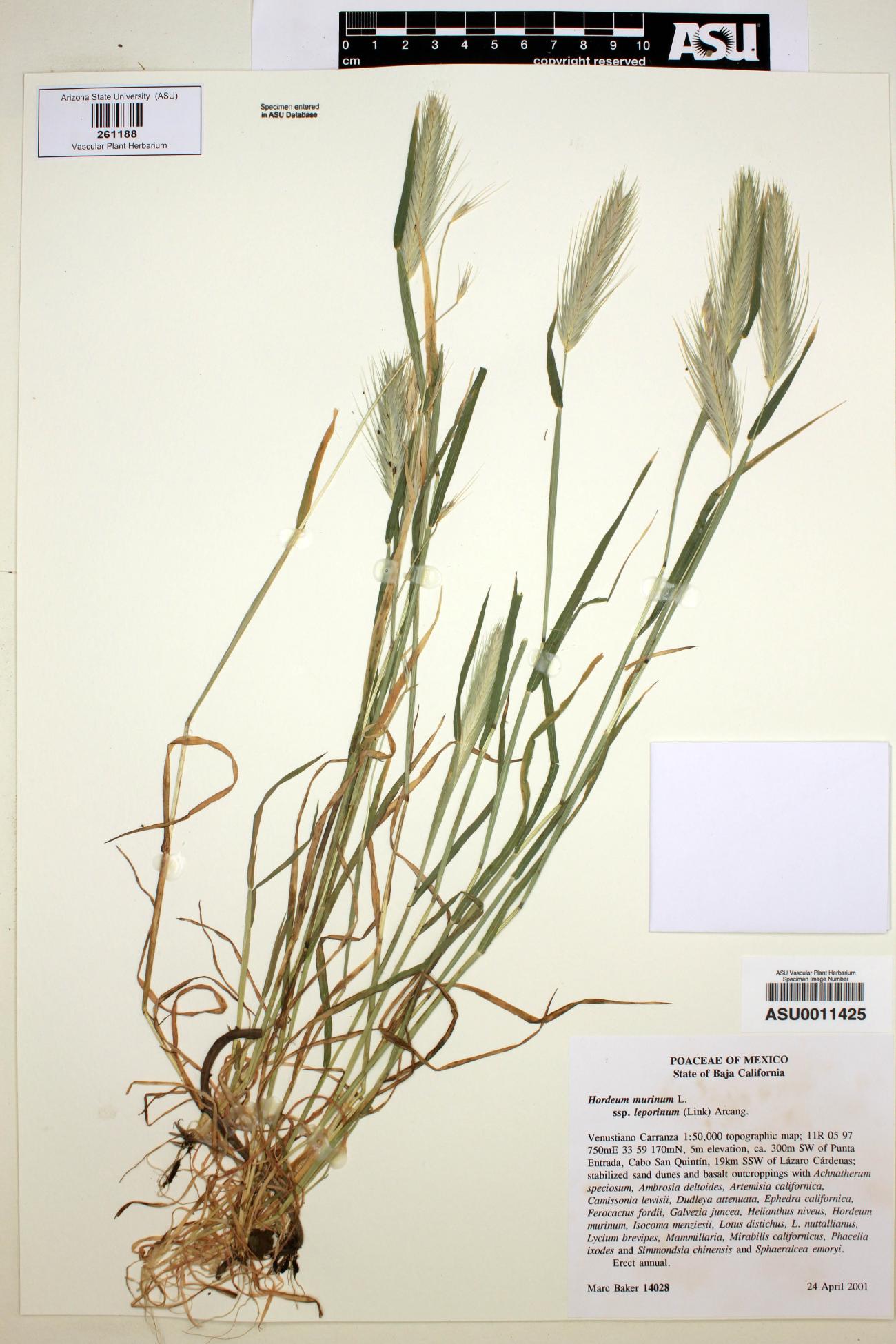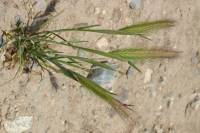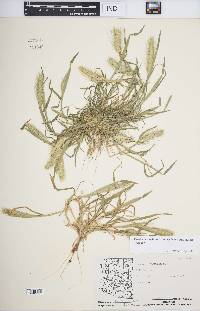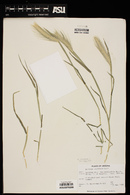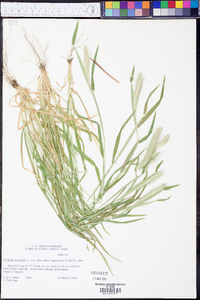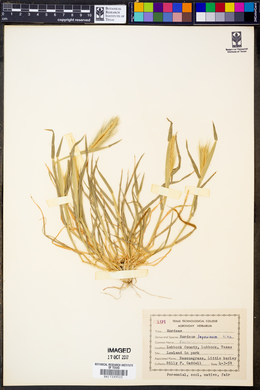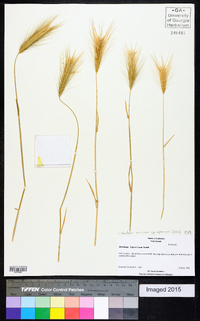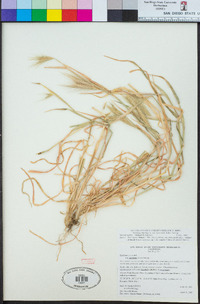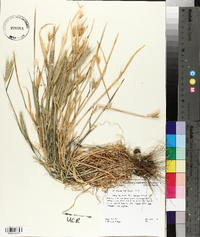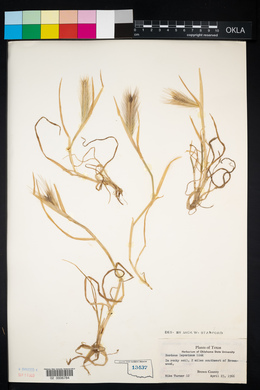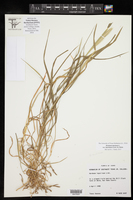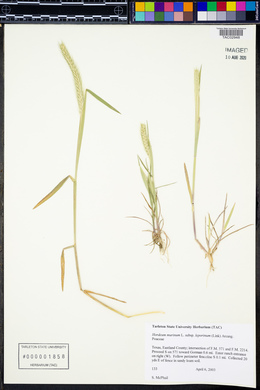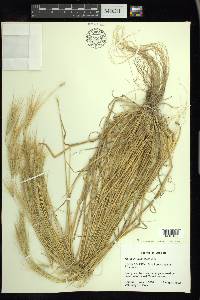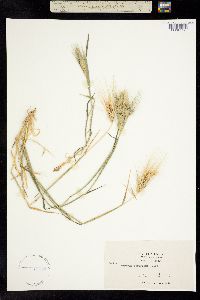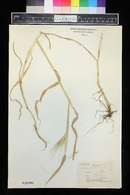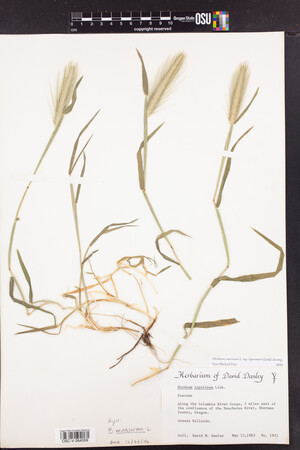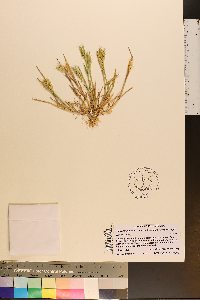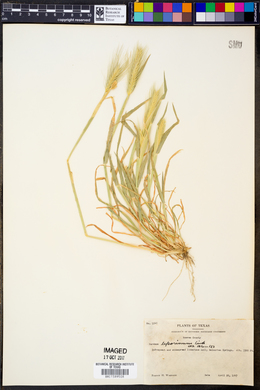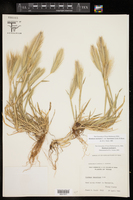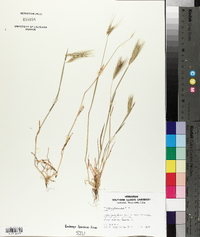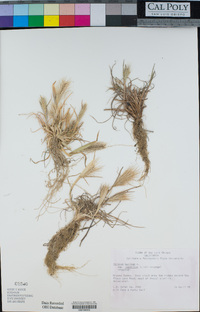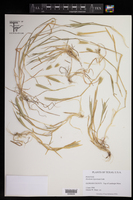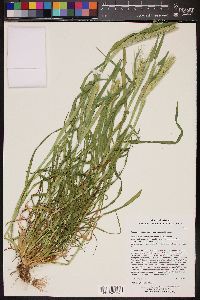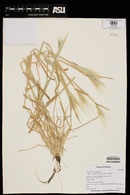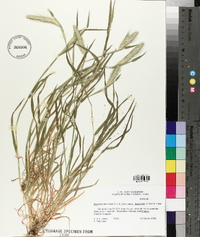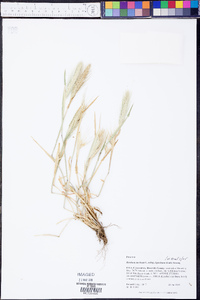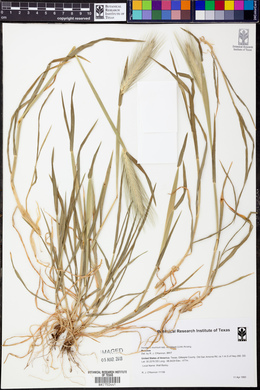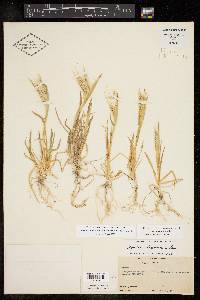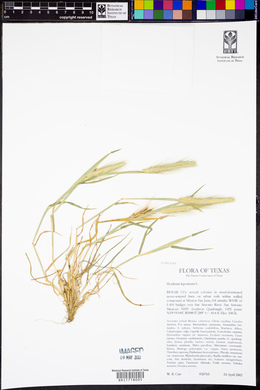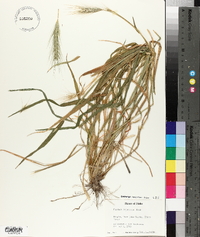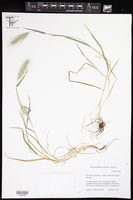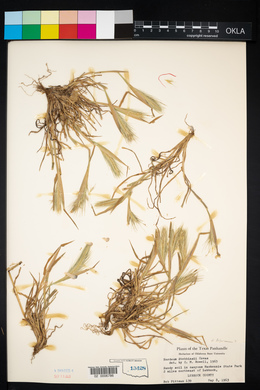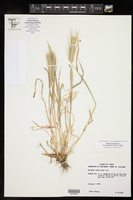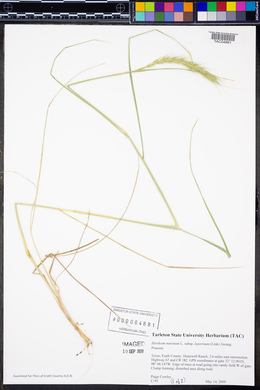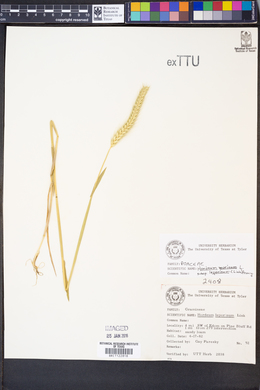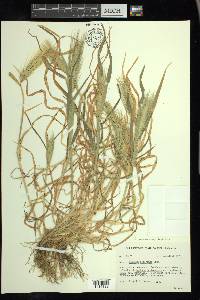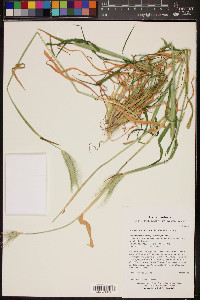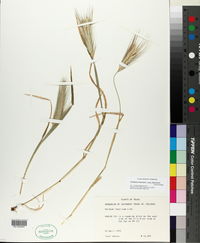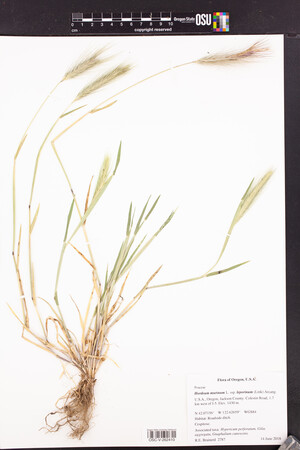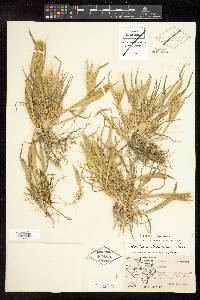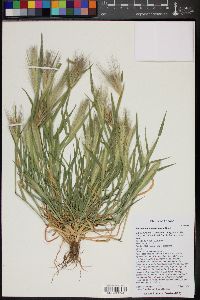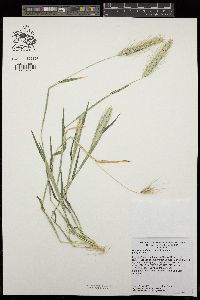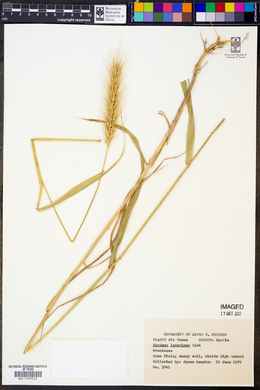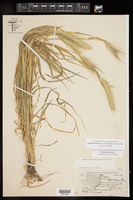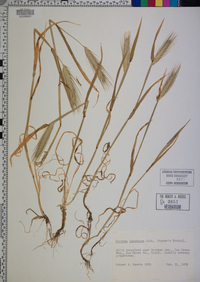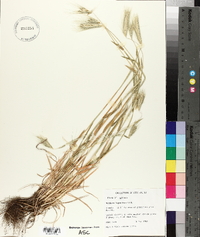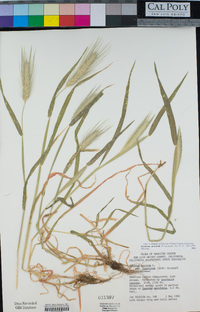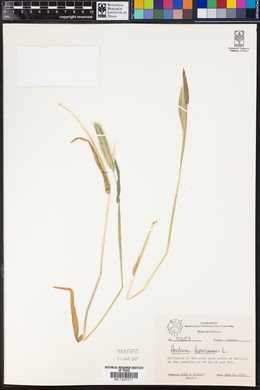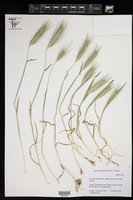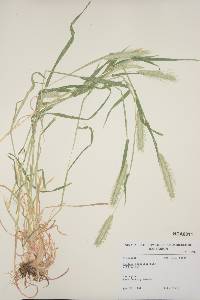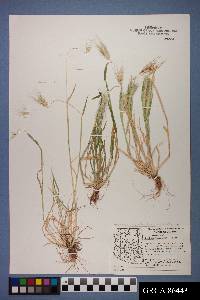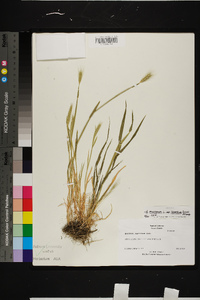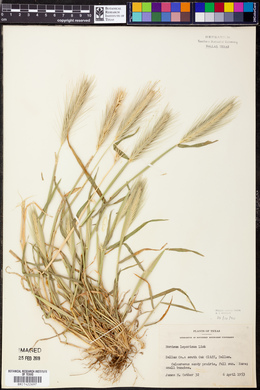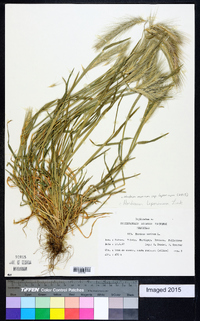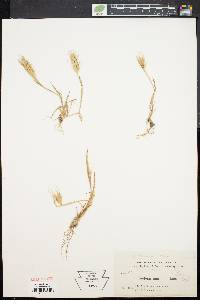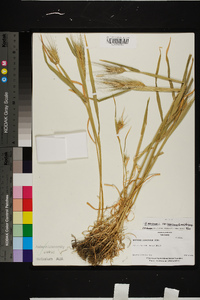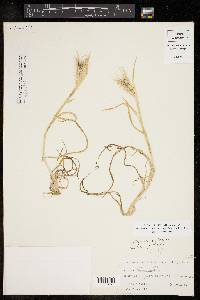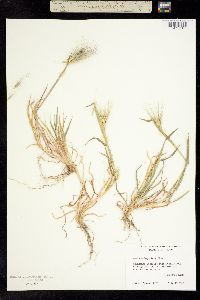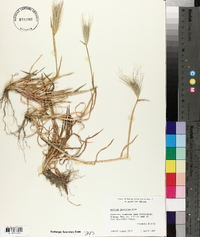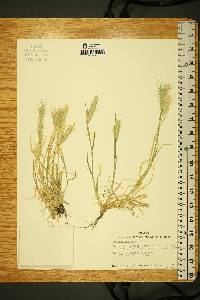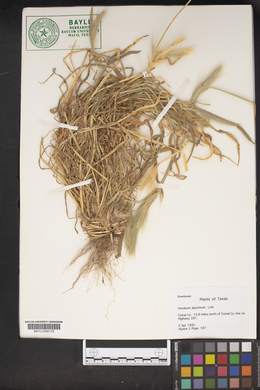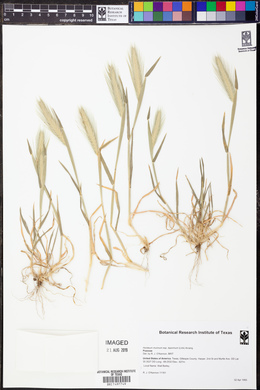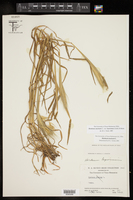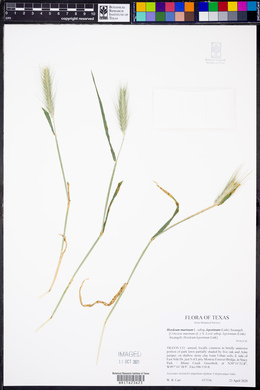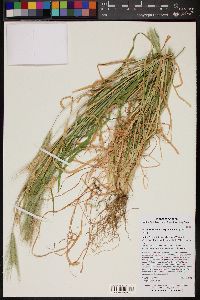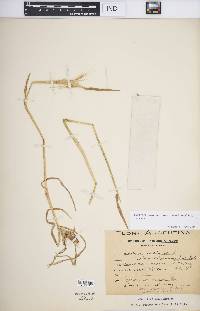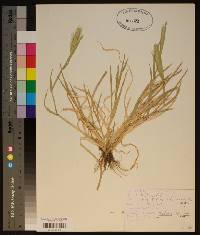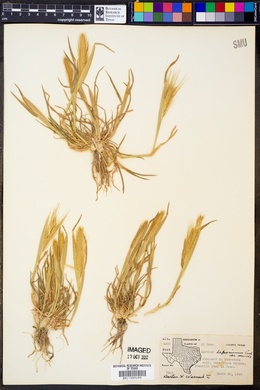
|
|
|
|
Family: Poaceae
leporinum barley, more...hare barley, Mouse Barley
[Critesion murinum subsp. leporinum (Link) A. Löve, moreHordeum ambiguum Döll, Hordeum leporinum Link, Hordeum murinum var. chilense Brongn., Hordeum murinum var. leporinum , Hordeum murinum var. velutinum Speg., Hordeum pilosum Steud.] |
Plants winter annuals. Culms 30-110 cm. Leaves green. Spikes green at anthesis, often more or less purple just before maturity. Central floret pedicellate; lemmas and awns shorter than those of the lateral florets; anthers 0.9-3 mm. Lateral spikelets: paleas scabrous on the lower 1/2; anthers 1.2-3.2 mm; rachillas about 0.25 mm, pale. 2n = 14, 28, 42. Hordeum murinum subsp. leporinum grows in waste places, roadsides, and disturbed areas in arid regions. It is native to the Mediterranean region. It is now established in the Flora region, being most common in the western United States. A hexaploid cytotype has been found in Turkey, Armenia, Turkmenistan, and Iran. It has been named H. leporinum var. simulans Bowden. It is treated here as part of H. murinum subsp. leporinum. FNA 2003, Gould 1980 Common Name: hare barley Duration: Annual Nativity: Non-Native Lifeform: Graminoid General: Introduced annual, geniculate and spreading at base, 15-50 cm tall. Vegetative: Blades mostly 3-8 mm broad, sparsely hispid, auriculate, auricles membranous, about 2 mm long; ligules short, membranous, upper sheath expanded, enclosing basal portion of the inflorescence. Inflorescence: Spicate raceme 4-8 cm long, about 1 cm broad excluding awns; lateral spikelets large, florets equaling or exceeding central floret; glumes of central spikelet and inner glumes of lateral spikelets broadened and flattened with ciliate margins; floret of central spikelet borne on pedicel as long as pedicels of lateral spikelets, its lemma, awn, and palea all shorter than those of lateral spikelets, awn of glumes 1.5-2.5 cm long, stiffly erect-spreading. Ecology: Weed of disturbed soils below 9,000 ft (2743 m); flowers April-September. Distribution: Introduced to much of w N. America from British Columbia, CAN, south to CA and west to TX, also along the east coast from GA north to ME; south to s MEX and S. Amer. and in Europe, Africa, Asia and Australia. Notes: Distinguished from other Hordeum by the being an annual to 0.25 m tall with auricles; disarticulation of the rachis at maturity; the length of awns; and the ciliate glumes. Separated from other Hordeum murinum by stalked central floret, central floret less than lateral ones, and lemma awn slightly less than awn of lateral floret. Ethnobotany: Unknown Etymology: Hordeum is the Latin name for barley, murinum means of mice, mouse-gray, like a mouse, while leporinum is from root lepus or leporis for a hare. Synonyms: Critesion murinum subsp. leporinum, Hordeum leporinum Editor: SBuckley 2010, FSCoburn 2015 Annual to 4(-6) dm; lvs flat, 2-5 mm wide, glabrous or hairy; auricles well developed, to 3.5 mm; spikes 4-7(-10) cm (excl. awns), erect, often partly enclosed in the inflated upper sheath; all 3 spikelets of the triad well developed, the central one sessile, its floret on an elongate rachilla-joint 1-2 mm and equaling or even surpassing the pedicels of the lateral spikelets; lateral spikelets usually staminate; glumes 15-22(-28) mm, those of the central spikelet and the inner glumes of the lateral spikelets ±lanceolate, 3-nerved and ciliate on the margins, the nerves scabrous, the outer glumes of the lateral spikelets awn-like and somewhat longer, scabrous; fertile lemma (6-)7-10 mm, glabrous, 5-veined, those of the lateral spikelets somewhat larger, 7-20 mm, sterile, all 3 lemmas tapering into awns 18-30 mm; anthers 0.8-1.2 mm; 2n=14, 28, 42. Moderately moist waste places; native of s. Europe, intr. and well established in w. U.S., sporadic with us. Perhaps better subordinated to no. 5 [Hordeum murinum L.] Gleason, Henry A. & Cronquist, Arthur J. 1991. Manual of vascular plants of northeastern United States and adjacent Canada. lxxv + 910 pp. ©The New York Botanical Garden. All rights reserved. Used by permission. |

